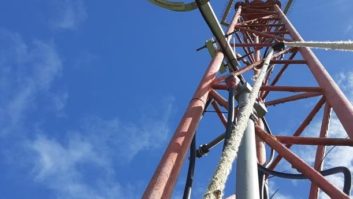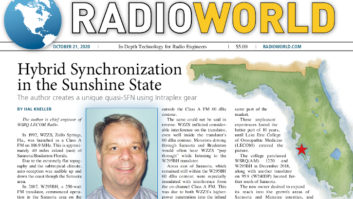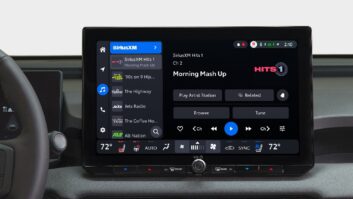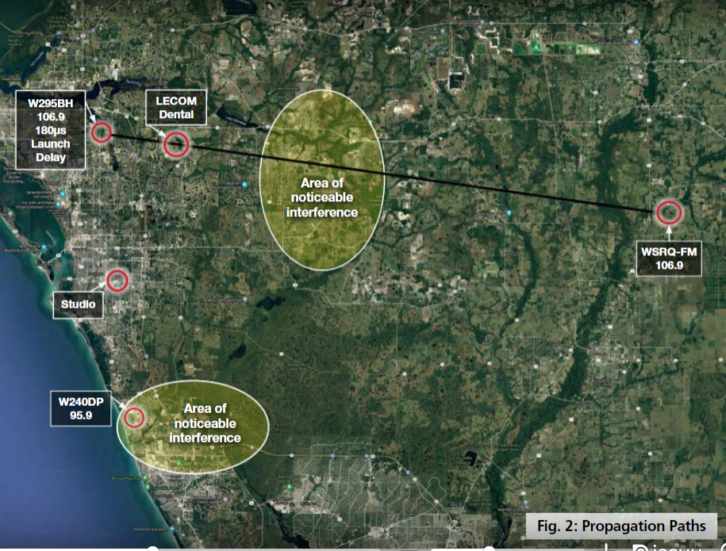
The author is chief engineer of WSRQ LECOM Radio.
In 1992, WZZS, Zolfo Springs, Fla., was launched as a Class A FM on 106.9 MHz. This is approximately 40 miles inland (east) of Sarasota/Bradenton Florida.
Due to the extremely flat topography and the subtropical climate, auto reception was audible up and down the coast though the Sarasota area.
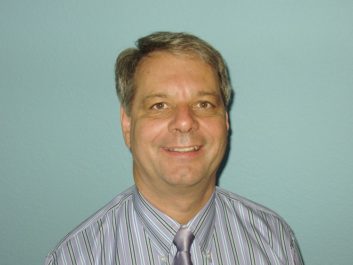
In 2007, W295BH, a 250-watt FM translator, commenced operation in the Sarasota area on the same frequency. While it has moved several times over the years, it never was a real problem for WZZS other than eliminating the fringe coverage, which was well outside the Class A FM 60 dBu contour.
The same could not be said in reverse. WZZS inflicted considerable interference on the translator, even well inside the translator’s 60 dBu contour. Motorists driving through Sarasota and Bradenton would often hear WZZS “pop through” while listening to the W295BH translator.
Areas east of Sarasota, which remained still within the W295BH 60 dBu contour, were especially inundated with interference from the co-channel Class A FM. This was due to both WZZS’s higher-power penetration into the inland Sarasota area, and the much lower power of the 106.9 translator in that same part of the market.
These unpleasant experiences lasted the better part of 10 years, until Lake Erie College of Osteopathic Medicine (LECOM) entered the picture.
The college purchased WSRQ(AM) 1220 and W295BH in December 2018, along with another translator on 95.9 (W240DP) located further south of Sarasota.
The new owner desired to expand its reach into the growth areas of Sarasota and Manatee counties, and eliminate the interference caused by WZZS. LECOM accomplished both objectives by acquiring WZZS in December 2019.
The initial simulcasting efforts fell short of the intended goal. With no simple way properly to time the audio using the existing setup, along with a multipath-like (simulcast interference) sound in many important areas, it became clear that only full synchronization of the 106.9 signals would cure the problem.
With the help of Tony Gervasi, Intraplex specialist and sales manager for GatesAir, a proposal was delivered for an intelligent IP networking system with built-in synchronization. The goal was to establish a composite multiplex signal over IP to the three FM transmitter sites in a four-way simulcast with WSRQ (AM), using fiber connectivity to the public internet.
Preparations
The initial work required an evaluation of infrastructure to support the new networking strategy.
One positive was that the existing fiber connections (and related Service Level Agreements) to all FM locations were adaptable to the new system. It was also possible to retain the existing GatesAir 950 MHz HD Link feeding the AM transmitter.
Less adaptable were the existing exciters and stereo generators — together anyway — which were not matched and would be unable to achieve the required synchronization.
The initial work involved extending the existing VPN to include the Zolfo Springs transmitter site that would become WSRQ(FM). That site used a Harris (GatesAir) Z5CD transmitter that integrated an older exciter that was unable to properly match modulation components to the W295BH transmitter from a different manufacturer.
Without full matching, there was no way to properly and fully synchronize. Thus, it was proposed to replace the old Harris exciter in the Z5CD with a new GatesAir FAX-50 exciter, and install a GatesAir Flexiva FAX 1kW air-cooled transmitter/exciter at W295BH.
It was determined that the existing Wheatstone FM-55 audio processor with its integrated stereo generator could be retained, along with the SmartGen RDS encoder from Deva Broadcast. Both devices were moved from the W240DP Nokomis site to the WSRQ studio in preparation for the networking and transmission upgrades.
Meanwhile, the Flexiva FAX 1kW system replaced the translator for W295BH, and an existing BW Broadcast translator for W240DP on 95.9 FM was determined as adaptable to the new system. We were able to retain that transmitter since it lives on a different frequency, and its internal audio processor was engaged while the new system was being set up.
A single-frequency network with several transmitter sites would require matching exciters at each location to avoid synchronization issues. This is because when dealing with microseconds as it relates to the path of the radio signal, the differential delay in an unmatched signal through using different exciters will introduce unpredictable latency.
For this project, it was only required to use the same exciter on all 106.9 systems, making this a rarer kind of synchronized network than what we more typically see with a complete SFN architecture.
Connecting the Links
Next came the decision on which Intraplex IP Link codecs to use, most of which have the option to add Intraplex SynchroCast software.
The decision came down to either using AES192, with each site utilizing its own stereo generator and RBDS encoder, or some form of multiplex composite over IP, either analog MPX or digital AES192.
To function properly, the system would require one codec at the send site, and one at each of the three FM sites; for the AM transmitter, we planned to continue using the existing Intraplex HD Link 950 MHz STL.
We looked at three IP Link codecs, all of which support digital AES192 AES composite transport. After consultation with GatesAir’s Tony Gervasi, we elected to use AES192 distribution.
We selected the Intraplex IP Link MPXp codec model, which has a built-in feature set that includes GPS lock for synchronization, and optional LiveLook software for advanced network analytics. This gave us the flexibility of using both AES192 as well as the analog MPX composite using BNC connectors. We needed the analog MPX composite capability to feed our emergency backup transmitters /exciters, so the IP LINK MPXP offered the best of both worlds.
The audio chain at the studio consists of a Wheatstone WheatNet system that feeds IP audio to compatible devices on the network. The Wheatstone FM-55 processor is fed as a blade (node) on WheatNet, which has a standard analog composite multiplex output and a digital output that can be either AES/EBU (AES3) or AES192.
We chose to use the AES192 interface to the IP Link MPXp. We are told that there is a several dB of separation advantage and a slight loudness advantage by going this route.
This is not anything like the old AES3 interfaces to an exciter, where overshoots were common and perceived loudness was reduced. Performance has proven to us that the modulation control is very good over AES192. The RBDS encoder is also connected to an SCA input on the studio IP LINK MPXP codec, which means we can deliver a fully-processed stereo signal with embedded RBDS over IP.
The Intraplex codecs have some “secret sauce” not fully known to us, but one thing we learned is that AES192 as a standard is not highly efficient. The IP Link MPXp repacks the data much more tightly, and can deliver our complete signal in an uncompressed-linear mode at the astounding data rate of 1.64 Megabits per second. Conventionally, a stereo uncompressed linear AES3 signal requires about 1.5 Mbps, but here we have the entire baseband in a neat little package.
Redundancy is important, and the use of fiber and public internet for connectivity can provide for two parallel networks to move program audio. Using GatesAir’s Dynamic Stream Splicing (DSS) feature, we can run four streams across the two networks. At the present time we are installing a second ISP connection over a cable modem to back up the fiber network.
If the primary on the fiber fails or experiences packet losses on one provider, the software repairs the stream by utilizing redundant packets from the other. If there is only one connection available, two streams are sent with a slight delay on the second one (we are using 500 mS) and rarely have an audible dropout.
The system employs GPS lock at the studio and all FM sites, with the two 106.9 transmitters also utilizing the Intraplex SynchroCast feature. The Nokomis/Venice W240DP translator, on a separate frequency, receives the same composite signal with audio timed to synchronize with the 106.9 signals. This is critical since there is some overlap in coverage.
The Dynamic Stream Splicing feature is configured with between 180 and 500 microseconds of delay between the streams as they move across all FM sites to address that overlap. Since the W240DP translator operates on a different frequency, it does not require that we carrier lock the signal but the audio is synchronized.
Since going live, weeks go by before a single drop is noticed, which is a testament to the robust nature of Dynamic Stream Splicing feature. On rare occasions, ISP issues have created some problems, but the software still produces a “hitless” experience.
The Intraplex package also included Intraplex LiveLook feature for real-time network analytics. This feature also provides historical reporting on the quality of the IP connection between the different sites, including email notifications of connectivity issues. LiveLook provides insight on network behavior over time, which also delivers predictive capabilities for network troubleshooting.
Network Design Criteria
There are some compromises with our system’s design from the ideal. We cannot control the overlap areas completely, or offer precision timing over such a wide area. We also cannot pinpoint correction to all of our interference areas.
The presence of unpopulated (farmland/ranchland) areas between the sites has proven beneficial, and we were able to force most of the interference over that area. In an ideal SFN, we would use directional antennas, and perhaps even use multiple transmitter sites, to create a more robust, interference-free network. This is not a main station and booster scenario, however; this is a main station and translator situation. The math behind this calculates the “launch delay” at W295BH, because the signal takes longer to reach the areas of interference from the Zolfo Springs site due to distance.
Our “sweet spot” from an interference standpoint was to be the licensee’s dental college in Lakewood Ranch, a suburb east of Sarasota subject to considerable interference. The distance from Zolfo Springs to that site is 63.43 km. We calculated that the signal from W295BH would reach that point 180 microseconds before the Zolfo Springs signal would arrive.
We set the launch delay from W295BH at 180 microseconds so the signals arrive in-phase and fully synchronized in every way, at our reference point. The signal can be heard at that location if either transmitter is turned off, but with very similar field strengths. Therefore, it is also an ideal test for perfect synchronization. When signal strength is nearly equal, timing is extremely critical. As the ratio of D/U increases, timing will become less critical until there is at least 20 dB difference.
The calculations proved correct: That site receives a clean signal with no multipath-type interference. With matched equipment at both the translator and the main FM station, the modulation components are identical, and in the end, we have a robust solution.
The big question: Would this timing work out for the rest of the area to the west where either signal may be heard, depending upon location?
Strong Results
As Fig. 1 below shows, the IP Link MPXp feeds a Flexiva FAX 1 kW translator at W295BH (click on the image to see it enlarged).
At the former WZZS site, ow WSRQ(FM), a FAX50 exciter feeds the legacy Harris Z5CD transmitter. At W240DP, the audio is also time-stamped and transmits in audio synchronization with the 106.9 signals, but again the carrier is not locked by GPS.
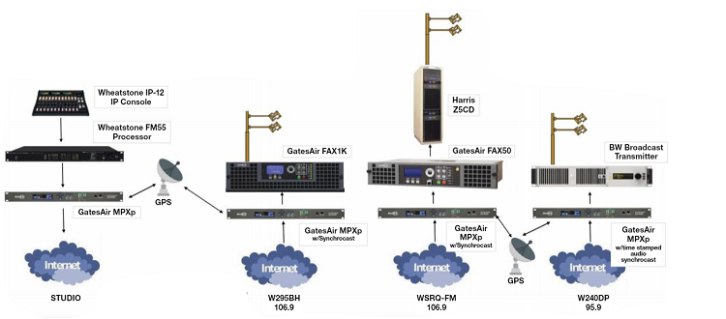
Fig. 2 shows the propagation paths between the translators and the Class A FM. As mentioned, LECOM operates a dental college in Lakewood Ranch, east of Sarasota. Lakewood Ranch is a “boom town” and has had huge growth over the last 10 years, which is projected to continue. It was also an area prone to extreme chronic interference, especially under certain seasonal weather conditions.

We were able to have enough control to be able to lock in Lakewood Ranch and still not have any noticeable interference in the immediate Sarasota/Bradenton area from the WSRQ signal from 40 miles away.
East of Myakka State Park there is an interference zone that lasts about five miles before the WSRQ signal overrides the translator’s interference, traveling east. The good news is the interference area is programmed to be over “no-man’s land.” It is agricultural in nature and is not a heavily traveled commuter route. The timing could be adjusted either way to move this interference slightly, as needed.
The only other area of interference which could not be controlled in this scenario is south of Venice (see Fig. 1) where the signal strength of the 106.9 signals is very close to equal. However, this is right in the heart of the W240DP translator signal that simulcasts the 106.9 signals.
What is management saying about the results?
Operations & IT Manager Charlie Halley said, “I used to pull my van into my driveway inside the City of Sarasota. On one end I heard our station, and the other end I heard WZZS. Easy to tell because they were Spanish, we are Classic Hits. Now it’s seamless, end to end.” Charlie also appreciates LiveLook to keep an eye on the quality of the network.
General Manager Jim Schaffner adds, “I am very pleased with the station’s expanded reach and the sync of the two stations. And now our coverage is extended to over 60 miles inland, giving us several additional counties in our primary coverage area.”
Hal Kneller owned and operated radio stations from 1986 to 2014 and has served on numerous industry organizations such as NRSC and NAB technical committees. He is a member of the SBE National Certification Committee and Past Chapter Chair of SBE 90, Southwest Florida.
